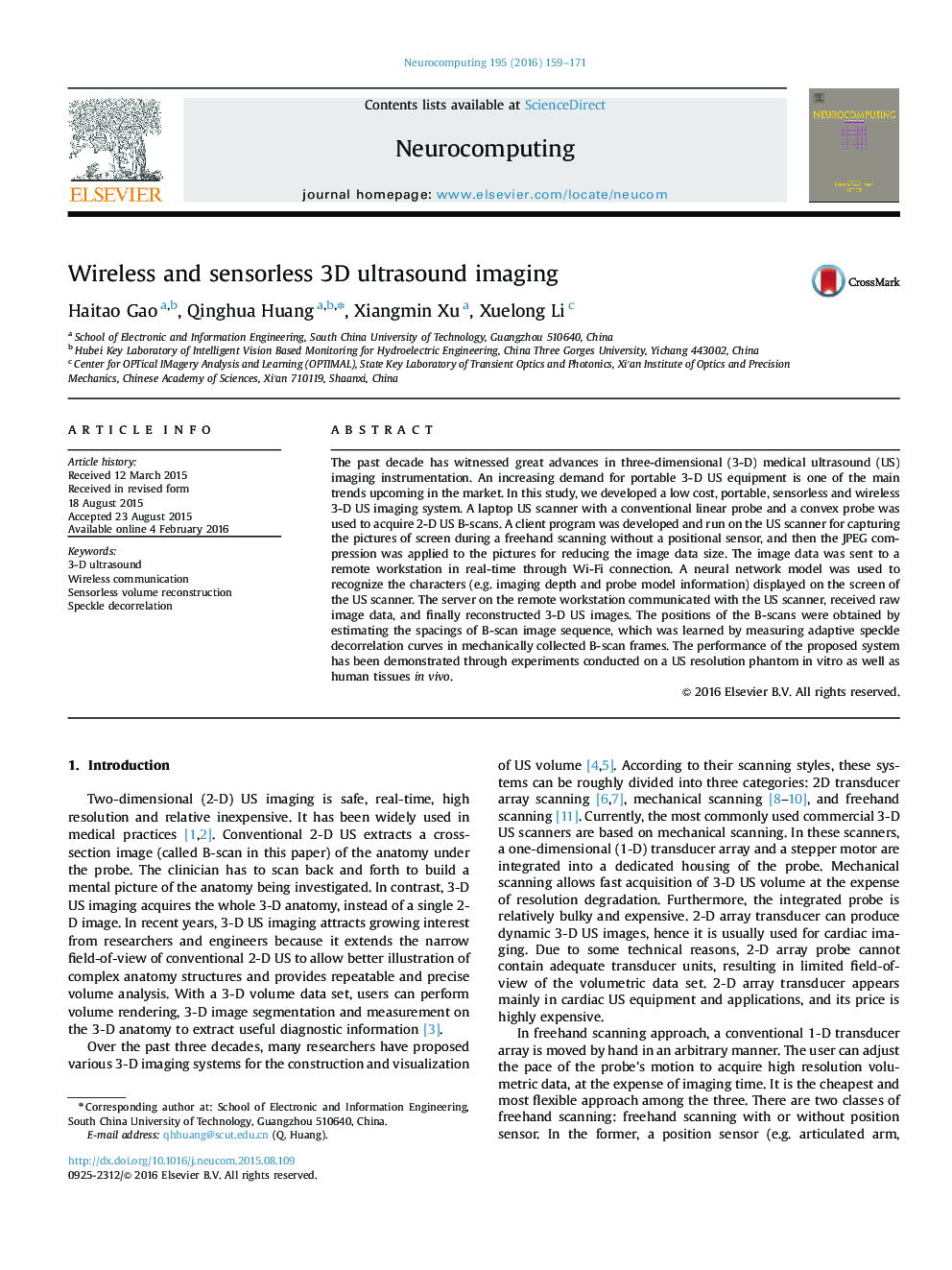| Article ID | Journal | Published Year | Pages | File Type |
|---|---|---|---|---|
| 411471 | Neurocomputing | 2016 | 13 Pages |
The past decade has witnessed great advances in three-dimensional (3-D) medical ultrasound (US) imaging instrumentation. An increasing demand for portable 3-D US equipment is one of the main trends upcoming in the market. In this study, we developed a low cost, portable, sensorless and wireless 3-D US imaging system. A laptop US scanner with a conventional linear probe and a convex probe was used to acquire 2-D US B-scans. A client program was developed and run on the US scanner for capturing the pictures of screen during a freehand scanning without a positional sensor, and then the JPEG compression was applied to the pictures for reducing the image data size. The image data was sent to a remote workstation in real-time through Wi-Fi connection. A neural network model was used to recognize the characters (e.g. imaging depth and probe model information) displayed on the screen of the US scanner. The server on the remote workstation communicated with the US scanner, received raw image data, and finally reconstructed 3-D US images. The positions of the B-scans were obtained by estimating the spacings of B-scan image sequence, which was learned by measuring adaptive speckle decorrelation curves in mechanically collected B-scan frames. The performance of the proposed system has been demonstrated through experiments conducted on a US resolution phantom in vitro as well as human tissues in vivo.
